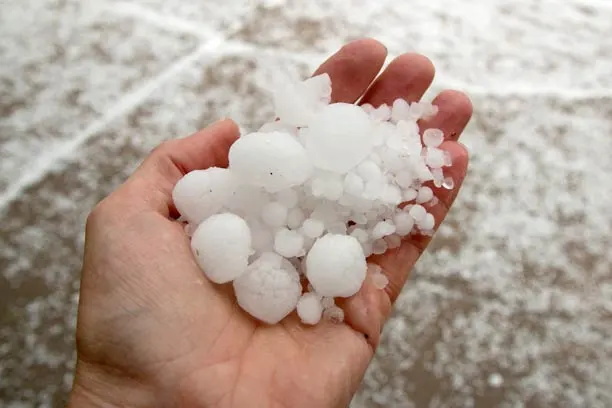Prepare Your Home and Farm for Hailstorm Season


Hailstorm season starts in April or late spring and generally runs through September, although it’s possible for hail to fall year-round. Hailstorms can be destructive and dangerous, so it’s crucial to be ready for them.
Follow this guide on how to prepare for a hailstorm and protect your family and property.
Hailstones can cause injuries like bruises and cuts. You could even get head trauma from a large hailstone. Plus, hail may fall during thunderstorms, so you could be at risk of lightning strikes or objects blowing in the wind.
Watch the weather reports for thunderstorm warnings so you can anticipate hail. If hail falls and you’re indoors, close doors, windows, curtains and blinds and stay away from windows. If you’re outdoors and you can’t get indoors, crouch down and protect your head and neck with your arms. Stay away from tall objects and structures that could be struck by lightning. If you’re driving, pull over and try to cover yourself in case the windows get broken.
If hail or any other cause has damaged your roof in the past, repair it promptly so hail doesn’t damage it further. If you’re going to replace your roof and you live in an area that often gets hailstorms, you may want to consider impact-resistant shingles. You may also want to install storm shutters to protect glass doors, windows and skylights.
Because hail often falls during windy thunderstorms, it’s a good idea to trim trees that are close to your home, barn or outbuildings and to remove any dying or dead branches. You may also want to clear your gutters and downspouts so water doesn’t back up and damage your buildings.
Just about anything that’s outdoors can be at risk for hailstorm damage. If possible, move cars, trucks, tractors and other farm vehicles and equipment into garages or other protected spaces. If you don’t have that option, covering them with a thick blanket can help.
Store smaller items that could be damaged or blown away. That could include patio furniture, children’s toys and tools like rakes and shovels.
If you have a ranch or farm, you’ll want to do what you can to protect your livestock and crops. Of course, it’s impossible to remove the risk of hail damage. For livestock, it can help to provide shelter so they have some protection from the storm. You’ll also want to make sure your fences are well-maintained and that you clear debris from your land.
When it comes to how to protect plants from hail, what you’re able to do depends on the type of crop you’re growing and the area you need to cover. You may be able to protect crops with hail netting, mesh screens, cloth sheets, cardboard, tarps or containers.
Hail can total vehicles, destroy a season’s worth of crops or cause significant damage to roofs, barns and other buildings. Farm Bureau offers auto insurance, home and property insurance and farm and ranch insurance that can help cover the costs of hail damage. Reach out to a Farm Bureau agent today to make sure you have the coverage you need.